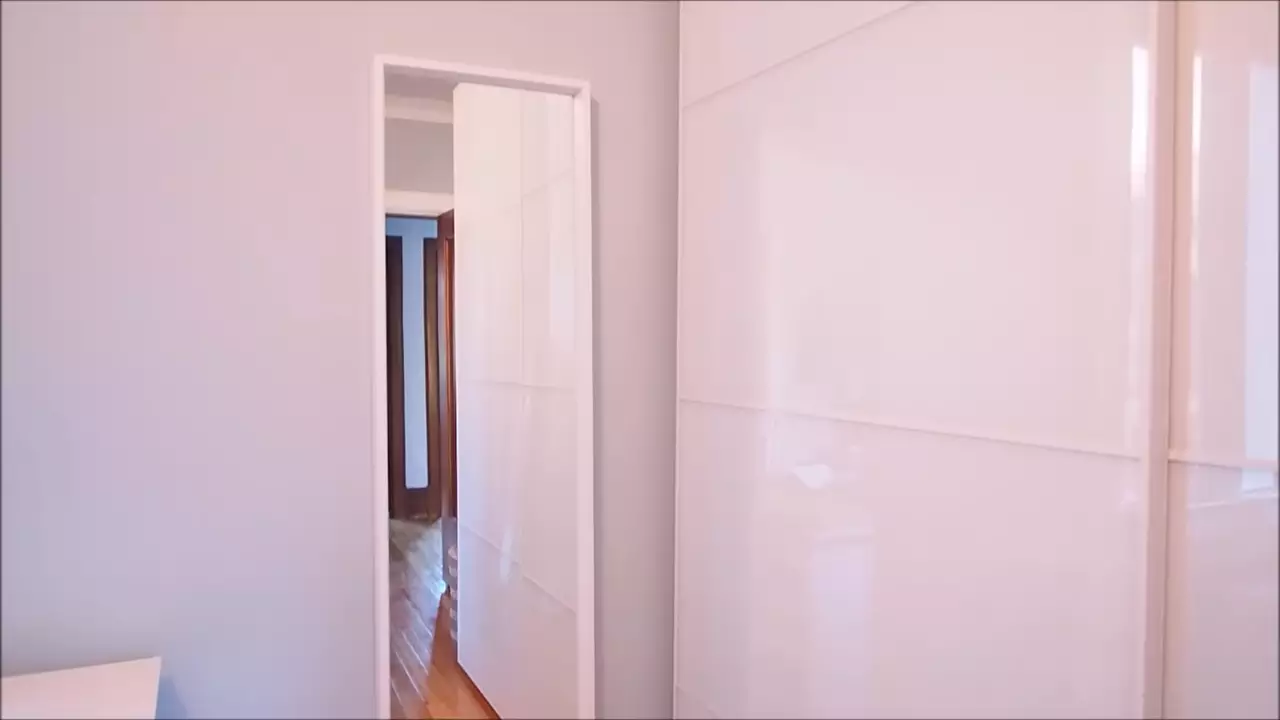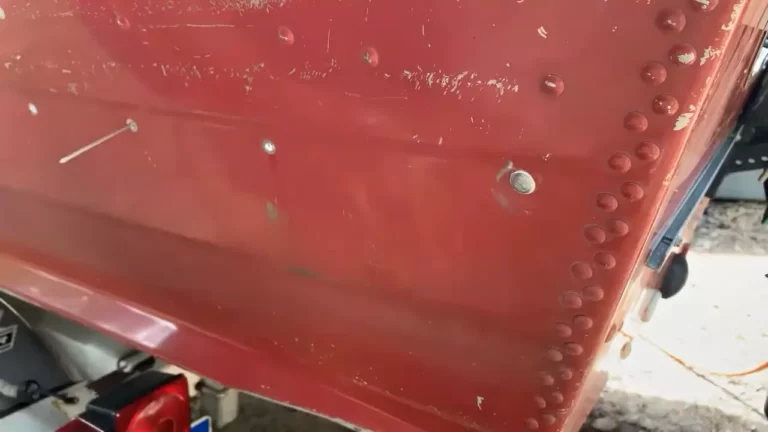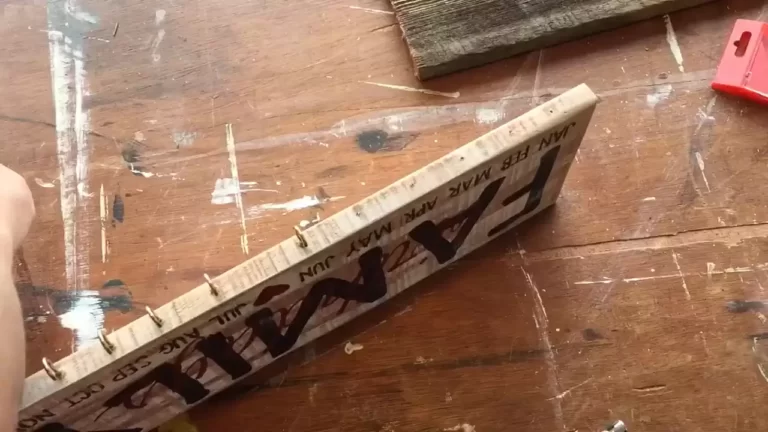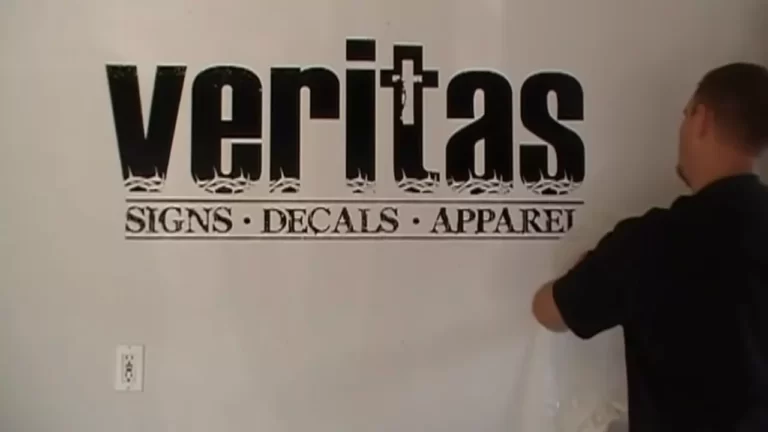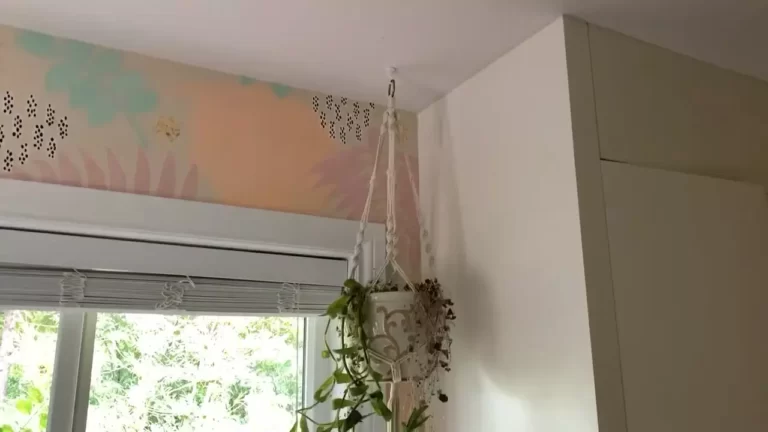How to Install Wall Anchors in Plaster?
To install wall anchors in plaster, drill a hole, insert the anchor, and secure the screw tightly. For a well-rounded Installing wall anchors in plaster can be a daunting task if not done correctly.
Plaster is a delicate material, and if not handled properly, it can crack or crumble. However, with the right technique and tools, you can securely attach objects to your plaster walls without causing any damage. We will provide a step-by-step guide on how to install wall anchors in plaster, ensuring a strong and stable connection for your fixtures or decorations.
So, let’s get started and learn how to anchor your items securely to plaster walls.
The Importance Of Wall Anchors In Plaster
When it comes to hanging heavy objects or fixtures on plaster walls, the importance of wall anchors cannot be overstated. Plaster walls are inherently fragile and prone to cracking or crumbling under pressure. Without the proper support, your items may fall off the wall, causing damage and potential injury. This is where wall anchors come in – they provide stability and security, ensuring that your items stay firmly in place.
Why wall anchors are essential for plaster walls
Plaster walls, made from a combination of gypsum, lime, and sand, are delicate and require special care when installing items. Without using wall anchors, screws or nails alone may not hold the weight of heavier objects, leading to disastrous consequences. Wall anchors, on the other hand, distribute the weight evenly over a larger area of the wall, reducing the risk of cracks and damage.
Wall anchors work by gripping the plaster and creating a secure base for screws or hooks. They are designed to withstand heavier loads and provide a stable anchor point, giving you the confidence to hang items without fear of them coming loose.
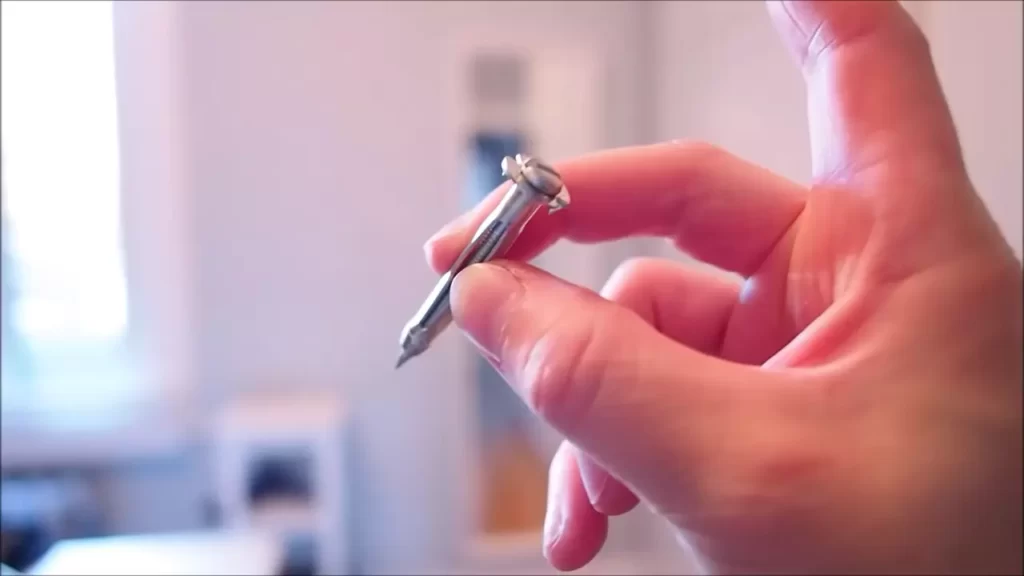
Benefits of using wall anchors for plaster walls
Using wall anchors for plaster walls offers several benefits that make them essential for any installation:
- Increased weight capacity: Wall anchors significantly enhance the weight-bearing capacity of the plaster walls, allowing you to hang larger and heavier items securely.
- Reduced risk of wall damage: By distributing the weight over a larger surface area, wall anchors help alleviate strain on the plaster, minimizing the chance of cracks or crumbling.
- Versatility: Wall anchors come in various types and sizes, catering to different needs and wall thicknesses. Whether you’re hanging a mirror, shelving unit, or decorative piece, there is a wall anchor suitable for the job.
- Easy installation: Most wall anchors are relatively easy to install and require minimal tools. By following a few simple steps, you can achieve a secure and sturdy mounting point on your plaster wall.
- Peace of mind: By using wall anchors, you can have peace of mind knowing that your items are securely attached to the wall and won’t come crashing down unexpectedly.
Overall, the investment in wall anchors not only protects your plaster walls from damage but also ensures the safety of your belongings. Don’t take chances with the structural integrity of your walls – use wall anchors and enjoy a worry-free hanging experience.
Types Of Wall Anchors For Plaster Walls
When it comes to hanging heavy objects on plaster walls, using the right type of wall anchor is crucial in order to securely fasten the item without causing any damage. There are several types of wall anchors available for plaster walls, each offering unique advantages depending on the weight and size of the object being mounted. In this article, we will provide an overview of different types of wall anchors suitable for plaster walls, help you choose the right one for your project, and highlight key factors to consider during the selection process.
Overview of different types of wall anchors
If you are unsure about which type of wall anchor to use for your plaster walls, here are some popular options:
- Expansion Anchors: These anchors expand against the backside of the plaster, providing a secure and stable hold. They are ideal for heavy items and come in various designs such as sleeve anchors and wedge anchors.
- Cavity Anchors: Cavity anchors are specifically designed for hollow areas behind the plaster, offering reliable support for medium to heavy objects. They work by expanding or collapsing within the cavity, ensuring a strong hold.
- Metal Toggle Bolts: Toggle bolts come with a pair of wings that fold back upon insertion and expand behind the plaster, providing additional support. They are excellent for hanging objects like mirrors, shelves, or cabinets.
- Plastic Toggle Bolts: Similar to metal toggle bolts, plastic toggle bolts offer a lightweight alternative while maintaining their strength in mounting objects on plaster walls. They are easy to install and remove.

Choosing the right wall anchor for plaster walls
When selecting a wall anchor for your plaster walls, consider the following factors:
- Weight Capacity: Determine the weight of the object you plan to hang and choose an anchor that comfortably supports its load.
- Wall Thickness: Measure the thickness of your plaster walls to ensure the chosen anchor is suitable for that depth.
- Material Compatibility: Consider the material of the object you are mounting and select an anchor that works well with it. Some materials may require specific anchor types.
- Installation Ease: If you are a beginner or looking for a quick installation, opt for wall anchors that are easy to install without any specialized tools.
Factors to consider when selecting wall anchors for plaster walls
Aside from the previously mentioned factors, here are a few more considerations to keep in mind:
- Wall Condition: Inspect the condition of your plaster walls before choosing a wall anchor. Cracks or weakened areas may require additional reinforcement or a different type of anchor.
- Anchor Size: Ensure that the anchor size is suitable for the intended wall and object. A larger anchor may cause unnecessary damage, while a smaller one may not provide adequate support.
- Removability: If you plan on rearranging or removing the mounted object in the future, consider anchors with easy removal capabilities to avoid excessive damage to the plaster.
By taking these factors into account, you can confidently select the right wall anchor for your plaster walls, ensuring a secure and long-lasting installation.
Step-By-Step Guide To Installing Wall Anchors In Plaster
In this step-by-step guide, we will walk you through the process of installing wall anchors in plaster, ensuring a secure and stable installation. Follow these instructions carefully to avoid any damage to your walls and achieve the best results.
Preparing the wall surface for installation
The first step in installing wall anchors in plaster is to prepare the wall surface. Make sure the area is clean and free of any dust or debris. Use a soft cloth or sponge to wipe away any dirt or grime. This will provide a smooth and even surface for the anchors to be installed.
Marking the anchor locations on the wall
Once the wall surface is clean, it’s time to mark the locations where the wall anchors will be installed. Use a pencil or a marker to make small dots on the wall, indicating where each anchor will go. Take measurements and ensure the markings are evenly spaced and aligned. This will help you achieve a balanced and aesthetically pleasing final result.
Drilling the holes for the anchors
With the anchor locations marked, it’s time to drill the holes in the plaster. Use a drill with a masonry bit that matches the size of your wall anchors. Start drilling carefully, applying light pressure to avoid any damage to the plaster. Slowly increase the pressure as you drill deeper until the hole reaches the required depth. Repeat this process for each anchor location.
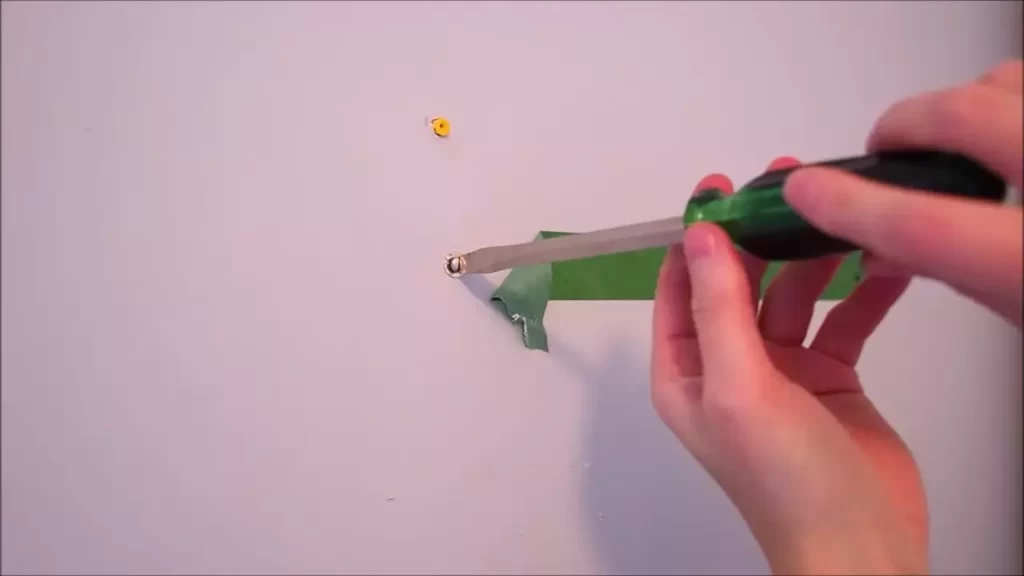
Inserting and securing the wall anchors in plaster
Once the holes are drilled, it’s time to insert the wall anchors. Gently tap the anchor into the hole using a hammer until it is flush with the surface of the plaster. Ensure that the anchor is securely in place and does not wobble or move. This will provide a stable foundation for mounting any fixtures or objects on the wall.
Testing the strength and stability of the anchors
After all the anchors are installed, it is crucial to test their strength and stability before proceeding with mounting anything on the wall. Apply gentle pressure or give a light tug to each anchor to ensure it holds firm and does not come loose. If any anchor feels loose, remove it and try a larger or different type of anchor for a more secure fit.
By following this step-by-step guide to installing wall anchors in plaster, you can ensure a secure and stable installation, allowing you to confidently mount objects on your wall without the risk of damage or instability.
Tips And Tricks For Successful Wall Anchor Installation In Plaster
Best practices for drilling into plaster walls
When it comes to installing wall anchors in plaster, following the best practices for drilling is essential. Here are a few tips to ensure a successful installation:
- Choose the right drill bit: Using a masonry or carbide-tipped drill bit that is compatible with plaster will help prevent cracking or crumbling of the material.
- Mark the spot: Before drilling, use a pencil or painter’s tape to mark the exact location where the wall anchor will be inserted. This will ensure accuracy and prevent unnecessary damage.
- Drill slowly and carefully: Plaster is a delicate material, so it’s important to drill slowly and with a light touch. Applying too much pressure can cause the plaster to crack.
- Keep the drill perpendicular: Maintain a perpendicular angle while drilling to prevent the hole from becoming uneven or sloping.
- Clear away debris: After drilling the hole, use a brush or vacuum to remove any dust or debris. This will ensure a clean and secure fit for the wall anchor.
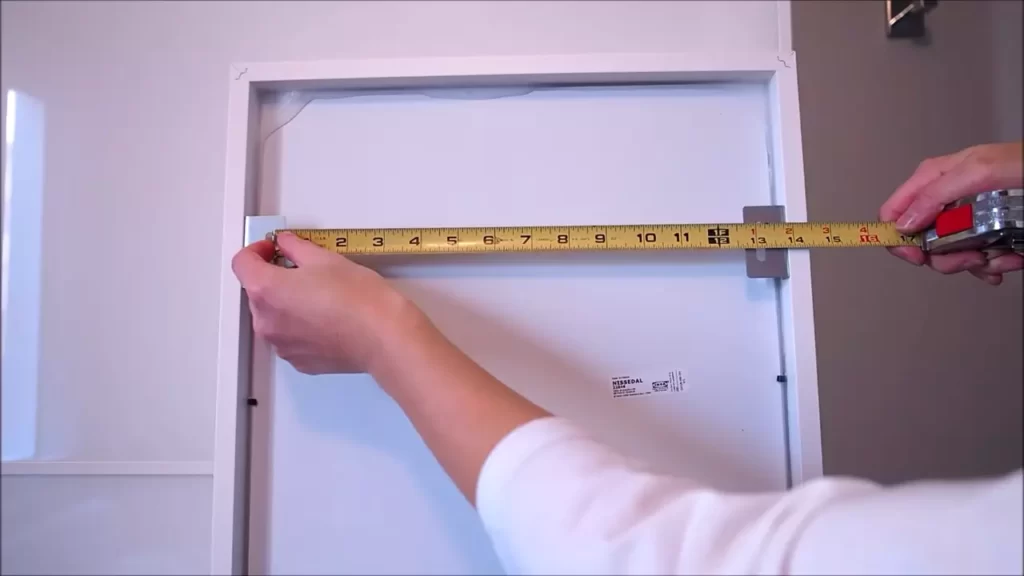
Suggested tools and equipment for installing wall anchors in plaster
Having the right tools and equipment can greatly contribute to the success of your wall anchor installation in plaster. Here are the essential items you’ll need:
| Tools | Equipment |
|---|---|
|
|
Common mistakes to avoid when installing wall anchors in plaster
While installing wall anchors in plaster, it’s important to avoid common mistakes that can lead to unsuccessful installations or damage to your walls. Be sure to steer clear of these errors:
- Using a regular drill bit: Plaster requires a specialized drill bit, such as a masonry or carbide-tipped one. Using a regular bit can cause the plaster to crack or crumble.
- Drilling too forcefully: Applying excessive pressure while drilling can result in cracks or larger holes than intended.
- Skipping the pre-drilling step: Pre-drilling a smaller hole before inserting the wall anchor ensures a more secure fit and reduces the risk of damaging the plaster.
- Ignoring weight limits: Always check the weight limits specified by the wall anchor manufacturer and choose the appropriate anchor for your intended use.
- Not following package instructions: Each wall anchor may have specific installation instructions, so it’s crucial to read and follow them carefully.
Troubleshooting tips for any installation issues
If you encounter issues during the installation process, don’t worry! Here are some troubleshooting tips to help you overcome common problems:
- If the wall anchor feels loose or doesn’t hold securely, try switching to a larger anchor size or using a different type of anchor.
- If the plaster begins to crack or crumble while drilling, stop immediately and patch up the damaged area before continuing with the installation.
- If the wall anchor refuses to go into the drilled hole, tap it gently with a hammer to secure it in place.
- If the screw won’t go all the way into the wall anchor, double-check that you are using the correct screw size and length recommended by the manufacturer.
- If the wall anchor breaks or becomes damaged during installation, remove it carefully and replace it with a new one.
By following these tips and tricks, you’ll be able to install wall anchors in plaster successfully. Remember to always prioritize accuracy, caution, and the use of appropriate tools to achieve optimal results.
Additional Considerations For Installing Wall Anchors In Plaster
When it comes to installing wall anchors in plaster, there are a few additional considerations that you need to keep in mind. Plaster walls can be delicate and prone to cracking, so it’s essential to approach the installation process with care. In this section, we’ll explore some crucial points to consider when mounting heavy objects on plaster walls using anchors, removing and replacing wall anchors in plaster, and repairing any damage caused during wall anchor installation.
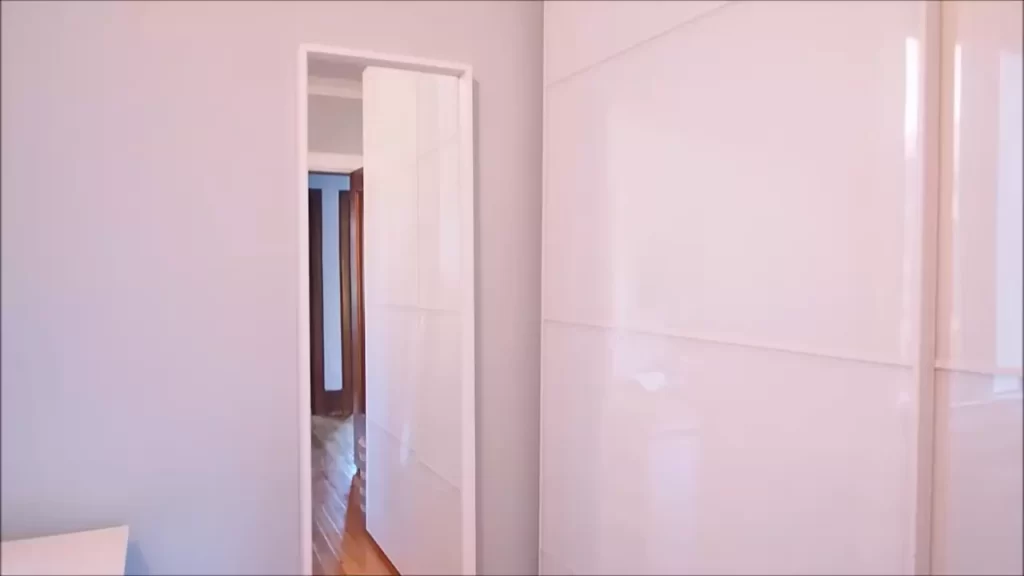
Mounting Heavy Objects on Plaster Walls Using Anchors
Mounting heavy objects on plaster walls can be a challenging task, but with the right approach, it can be done securely. Here are some steps to follow:
- Choose the right anchor for the job: When selecting wall anchors, consider the weight of the object you plan to hang. Plastic anchors are suitable for lightweight items, while metal anchors provide more strength for heavier objects.
- Locate a stud: Whenever possible, it’s best to anchor heavy objects directly into a stud for added stability. Use a stud finder to locate the stud behind the plaster.
- Mark the spot and pre-drill: Once you’ve located a stud or determined the anchor placement, mark the spot on the wall. Then, using an appropriately sized drill bit, pre-drill a hole in the plaster to guide the anchor.
- Insert the anchor: Gently tap the anchor into the pre-drilled hole until it is flush with the wall’s surface. Be cautious not to exert too much force, as this could cause the plaster to crack.
- Secure the object: Finally, screw or fasten the object onto the anchor, following the manufacturer’s instructions. Ensure that the object is secure and level before letting go.
Removing and Replacing Wall Anchors in Plaster
At times, you may need to remove or replace wall anchors in plaster. Here’s how you can do it:
- Removing a wall anchor: To remove a wall anchor, use pliers or a screwdriver to unscrew it counterclockwise. Apply gentle pressure while turning to prevent any damage to the plaster. If necessary, patch the hole left behind with spackling compound or a plaster repair kit.
- Replacing a wall anchor: If you need to replace a wall anchor, start by removing the old anchor using the aforementioned method. Once the anchor is removed, follow the steps outlined earlier to install a new anchor in its place.
Repairing Any Damage Caused During Wall Anchor Installation
In some cases, the installation of wall anchors can inadvertently cause damage to the plaster. Here’s how you can repair any such damage:
- Assess the extent of the damage: Carefully inspect the area around the anchor installation to determine the extent of the damage. Look for any cracks or holes in the plaster.
- Fill the cracks or holes: If you notice small cracks or holes, use spackling compound or a plaster repair kit to fill them. Apply the compound or kit according to the manufacturer’s instructions, smoothing it out for a seamless finish.
- Sand and repaint: Once the compound has dried, use sandpaper to smooth the repaired area. Then, apply a fresh coat of paint that matches the surrounding wall to conceal any repairs.
By following these additional considerations, you’ll be well-equipped to install wall anchors in plaster while ensuring the integrity of your walls. Don’t forget to double-check the weight capacity of the anchors you choose and always handle plaster walls with care to avoid unnecessary damage.
Frequently Asked Questions Of How To Install Wall Anchors In Plaster
How Do You Install Wall Anchors In Plaster?
To install wall anchors in plaster, start by selecting the appropriate anchor based on the weight of the item you want to hang. Use a drill to create a hole slightly smaller than the anchor’s diameter, then insert the anchor and gently tap it until it’s flush with the wall.
Finally, screw in the screws provided with the anchor to secure your item in place.
What Type Of Wall Anchors Are Best For Plaster Walls?
For plaster walls, it’s best to use expandable plastic anchors or toggle bolts. These types of anchors provide sturdy support and minimize any damage to the plaster. They can securely hold heavier items on plaster walls without the risk of tearing or cracking the material.
Can You Hang Heavy Objects On Plaster Walls Without Anchors?
It is not recommended to hang heavy objects on plaster walls without anchors. Plaster is a brittle material that cannot hold heavy weights on its own. By using wall anchors, you distribute the weight and provide extra support to prevent damage or potential injury.
Ensure you choose the correct anchor type for optimal safety and support.
Conclusion
To wrap up, installing wall anchors in plaster doesn’t have to be a daunting task. By following these step-by-step instructions, you can securely hang items on your plaster walls without any damage. Remember to choose the right type of anchor, prepare the wall properly, and use the correct techniques for a successful installation.
With this knowledge, you’ll have the confidence to tackle any wall anchoring project in your home. Happy DIY-ing!

